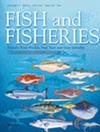纽芬兰和拉布拉多鳕鱼崩溃后竖琴海豹生态系统作用的增加
IF 6.1
1区 农林科学
Q1 FISHERIES
引用次数: 0
摘要
在世界范围内,鳍状动物的数量一直在增加,这给渔业管理带来了挑战,包括对渔具的破坏和对资源的竞争。在西北大西洋,格陵兰海豹的数量从1970年的180万增加到1990年的650万,到2024年稳定在440万,是世界上最大的鳍状海豹种群之一。大量的竖琴海豹与高猎物消耗率有关,这就提出了它们对被开发和非被开发物种的影响的问题。在纽芬兰和拉布拉多,20世纪90年代,鳕鱼和毛鳞鱼的数量锐减,破坏了生态系统,这些种群至今尚未恢复。本研究探讨了竖琴海豹在生态系统结构和功能中的生态作用和影响。使用Ecopath和Ecosim生态系统模型,我们模拟了三个关键时期的各种格陵兰海豹生物量情景:崩溃前(1985-1987),无脊椎动物优势(2013-2015)和部分底栖鱼类恢复(2018-2020)。这些情景探讨了海豹的枯竭和恢复、对鳕鱼种群的影响以及生态系统的影响。模拟表明,生态系统受到海豹自上而下的力量和毛鳞鱼自下而上的力量的驱动,毛鳞鱼是一种重要的饲料物种。虽然适度减少格陵兰海豹丰度对鳕鱼的影响有限,但增加毛鳞生物量对格陵兰海豹和鳕鱼都有积极影响。这项研究强调了将捕食者效应纳入基于生态系统的渔业管理的重要性,以预测变化并提高动态海洋系统的恢复能力。本文章由计算机程序翻译,如有差异,请以英文原文为准。
Increase in Harp Seal Ecosystem Role After the Cod Collapse in Newfoundland & Labrador
Pinniped populations have been increasing worldwide, posing challenges for fisheries management, including damage to fishing gear and competition for resources. In the Northwest Atlantic, harp seal numbers have increased from 1.8 million in 1970 to 6.5 million in 1990, stabilising at 4.4 million in 2024—one of the largest pinniped populations in the world. The large number of harp seals is associated with a high rate of prey consumption, raising questions about their impact on exploited and non‐exploited species. In Newfoundland and Labrador, ecosystems were disrupted with collapses of cod and capelin in the 1990s, and these populations have not yet recovered. This study examines the harp seal ecological role and influence on ecosystem structure and function. Using Ecopath with Ecosim ecosystem models, we simulated various harp seal biomass scenarios for three key periods: pre‐collapse (1985–1987), invertebrate dominance (2013–2015), and partial groundfish recovery (2018–2020). These scenarios explored harp seal depletion and recovery, impacts on cod stocks, and ecosystem effects. Simulations revealed that the ecosystem is driven by both top‐down forces from harp seals and bottom‐up forces from capelin, a key forage species. While moderate reductions in harp seal abundance had limited effects on cod, increasing capelin biomass had positive effects on both harp seals and cod. This study highlights the importance of integrating predator effects into ecosystem‐based fisheries management to anticipate change and increase resilience in dynamic marine systems.
求助全文
通过发布文献求助,成功后即可免费获取论文全文。
去求助
来源期刊

Fish and Fisheries
农林科学-渔业
CiteScore
12.80
自引率
6.00%
发文量
83
期刊介绍:
Fish and Fisheries adopts a broad, interdisciplinary approach to the subject of fish biology and fisheries. It draws contributions in the form of major synoptic papers and syntheses or meta-analyses that lay out new approaches, re-examine existing findings, methods or theory, and discuss papers and commentaries from diverse areas. Focal areas include fish palaeontology, molecular biology and ecology, genetics, biochemistry, physiology, ecology, behaviour, evolutionary studies, conservation, assessment, population dynamics, mathematical modelling, ecosystem analysis and the social, economic and policy aspects of fisheries where they are grounded in a scientific approach. A paper in Fish and Fisheries must draw upon all key elements of the existing literature on a topic, normally have a broad geographic and/or taxonomic scope, and provide general points which make it compelling to a wide range of readers whatever their geographical location. So, in short, we aim to publish articles that make syntheses of old or synoptic, long-term or spatially widespread data, introduce or consolidate fresh concepts or theory, or, in the Ghoti section, briefly justify preliminary, new synoptic ideas. Please note that authors of submissions not meeting this mandate will be directed to the appropriate primary literature.
 求助内容:
求助内容: 应助结果提醒方式:
应助结果提醒方式:


